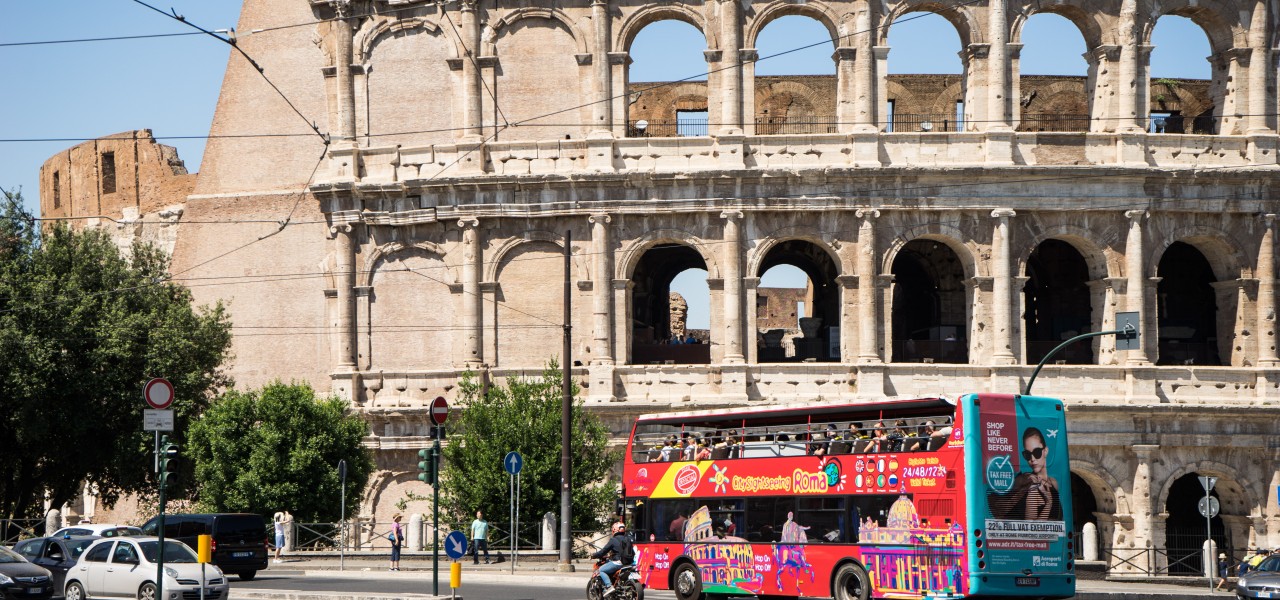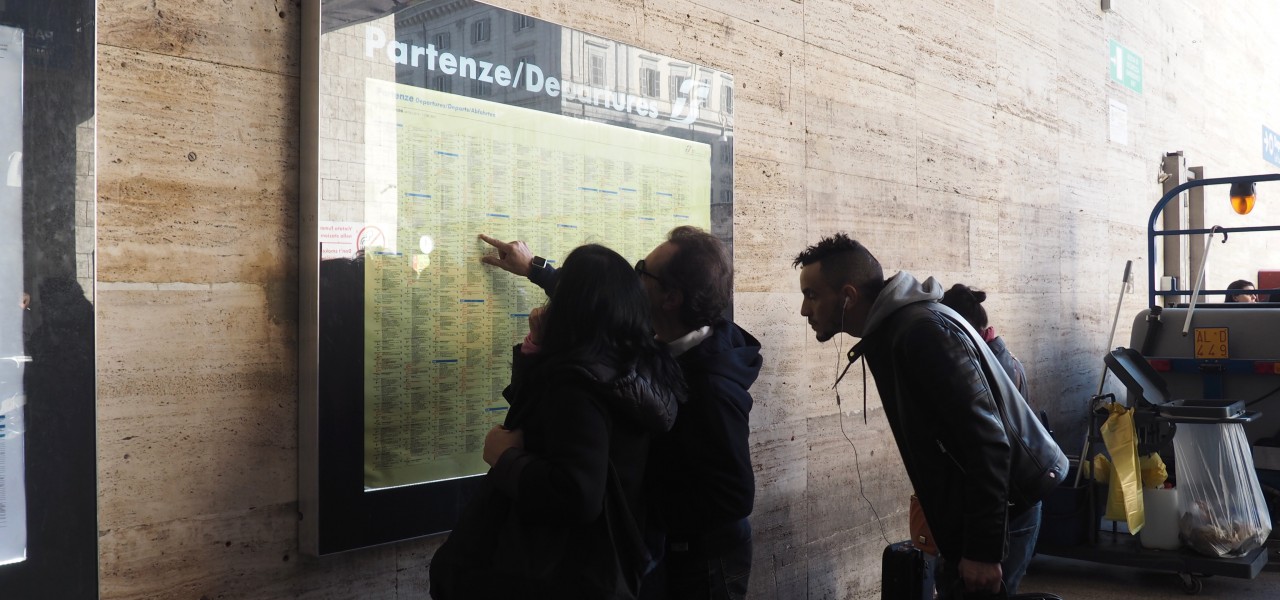Vittorio Emanuele II Rome. It is almost impossible to spend a few days in Rome without passing this impressive building. This time it is not the Colosseum and not St. Peter’s Basilica that are meant, but the national monument in honor of Viktor Emanuel II.
In the following article, I will tell you what this great monument in the heart of Rome is all about. And, of course which highlights you should not miss!

Probably the largest typewriter in the world – the monument to Vittorio Emanuele II in Rome
Meaning and history
The memorial commemorates the unification of Italy in 1861. As well as the associated first king of Italy, Viktor Emanuel II (Vittorio Emanuele in Italian). On the occasion of his death in 1878, it was decided to erect a monument to celebrate the unification of the country and the first king of Italy and to commemorate the entire Risorgimento era.

The construction of the so-called Vittoriano began in 1885 with Umberto I of Savoy, son of Vittorio Emanuele II – the royal namesake. It took almost 25 years to complete the monument, a relatively short time. Not just in terms of the size of the monument. But also if you consider the difficult conditions. Because numerous citizens who lived nearby had to be relocated for the construction. The official inauguration took place in 1911 and all the great personalities of the state were of course present for this festive occasion, even if the monument itself was not yet complete in all parts.

Vittorio Emanuele II in Rome: a monument with many names
Monumento a Vittorio Emanuele II, Vittoriano, ‘macchina da scrivere’ (typewriter). Or ‘torta nuzial’ (wedding cake) or alternatively ‘altare della patria’ (altar of the fatherland).
The sheer number of nicknames for the Italian national monument in the capital shows the central role played by the imposing monument for Vittorio Emanuele II in Rome. The opinion of the Romans about this monument, a complex that is a whopping 81 meters high and 135 meters wide, is not without controversy. What is the image of the Roman, and more generally the Italian, of their national monument?
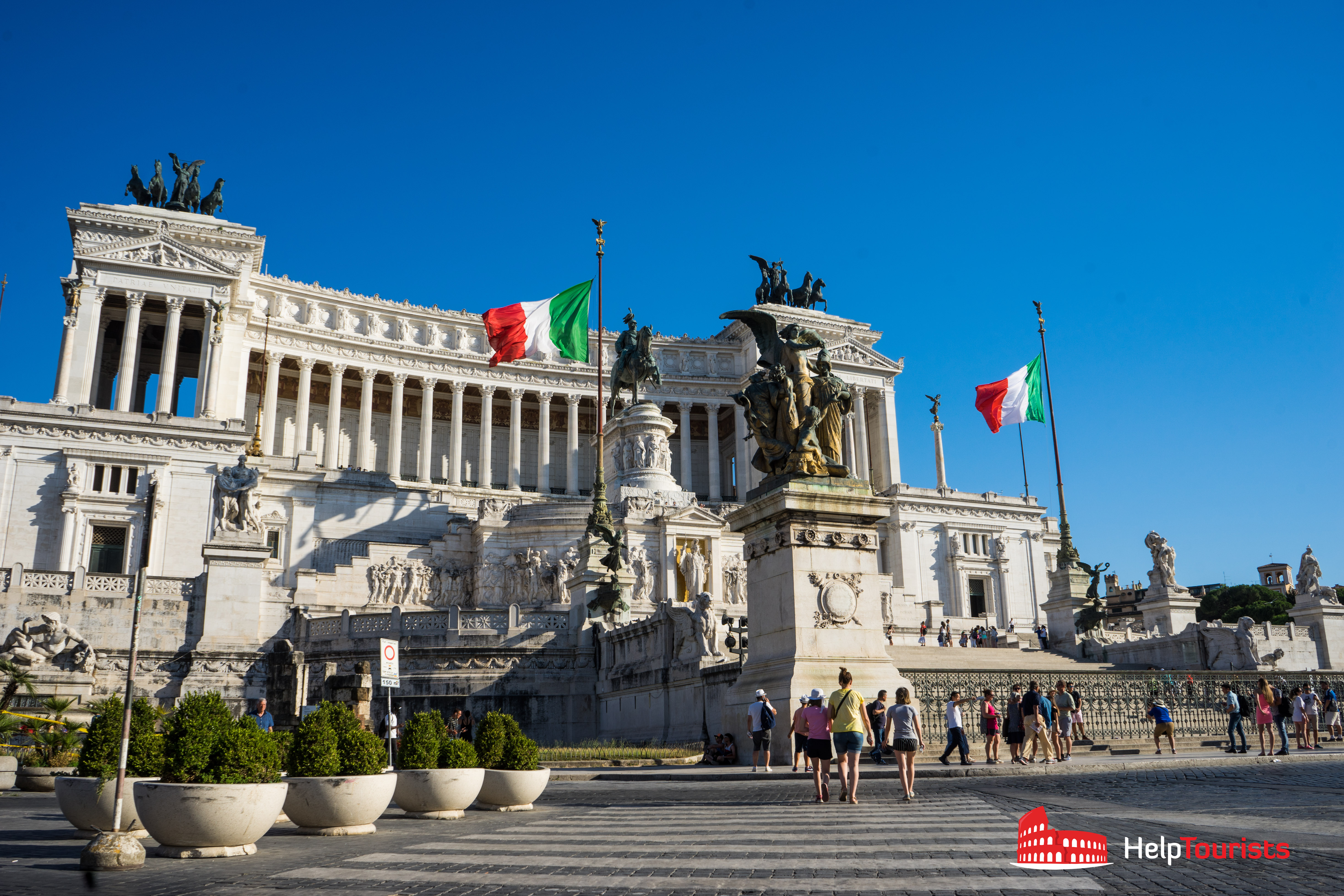
It is, without a doubt, a monument with controversy. And it has awakened changing emotions among the people of Rome from the beginning. On the one hand love, benevolence and respect. And on the other hand, if not really hate, at least annoyance because the Vittoriano is accused of having destroyed the former medieval cityscape of Rome. You can find the same thing in Paris. Parisians accused the Centre Pompidou as well of having destroyed the medieval area around the Marais.
Many Romans repeat that the building is ugly and associate the monument to Vittorio Emanuele II in Rome with fascism. In reality, it has nothing to do with Benito Mussolini or with the twenty years of his dictatorship. The project dates back to the end of the 18th century. That was long before the Duce took over the office of head of state. In fact, the Altar of the Fatherland is a monument of great symbolic value that unites all the values of the Risorgimento of Italy.
Architecture and symbolism
The Altar of the Fatherland Rome is not only one of the city’s most famous and most photographed monuments. It is also one of the most important in terms of the history of Italy, the Risorgimento and the Savoyard monarchy. It contains a variety of symbols and references to both national unity and Christianity and represents Italy in all its facets.

Its architecture is determined by a monumental portico, which gives the massive building some lightness. The Monumento for Vittorio Emanuele II in Rome thus makes a direct reference to ancient monuments such as the Pergamon Altar in Athens. At the same time, however, many elements of Art Nouveau and Liberty are used.
Iconic location
The choice to build the Vittoriano on the Campidoglio was certainly not a coincidence. This hill is one of the most important in Rome, among other things, of course, because it is one of the famous seven hills on which, according to legend, the capital of Italy was founded. The proximity to the neighboring Colosseum also played an important, symbolic role. Like no other building, the Colosseum represents with all its might for the era of imperial Rome. It also stands in perfect contrast to St. Peter’s Basilica in the Vatican, which instead symbolizes the worldly power of the popes.
This is a clear sign that the religious influence of the popes had to give way in a now unified and secular Italy. On the roof of the Vittoriano there are two imposing ashlars, which not only crown the building, but also stand for unity and freedom.

The 16 pillars of the central portico represent the regions of Italy. Even though Italy now has 20 regions, there were only 16 at the time of the construction of the Vittoriano. The Aosta Valley, Friuli-Venezia Giulia, Molise and Trentino-South Tyrol, which were added later or gained independence, are missing from the calculation at the time.
In the center of the monument you will find the statue of Rome. Against the background of a golden mosaic, which should emphasize the importance of the new capital and its geographic and political centrality. Directly above it is a large equestrian statue, which immortalises the eponymous king Vittorio Emanuele II on horseback. It was made in 1910 by Enrico Chiaradia, who worked on it for almost 20 years.
Vittorio Emanuele II in Rome – What you shouldn’t miss
1. The central equestrian statue of Vittorio Emanuele II
Speaking of equestrian statue. There is a story about the huge bronze equestrian statue in the center of the monument. When I heard it for the first time, it let me see the statue with very different eyes. Can you imagine that during the construction of the monument, a dinner with 20 people took place in the belly of the bronze horse? No? Then you are like me. I couldn’t imagine that at the beginning either. Because considering the overall size of the monument and the elevated position of the statue, it does not appear particularly large. In reality, however, it is a mammoth composition: a proud 10 meters long and 12 meters high; accordingly it is a lot bigger than my living room.
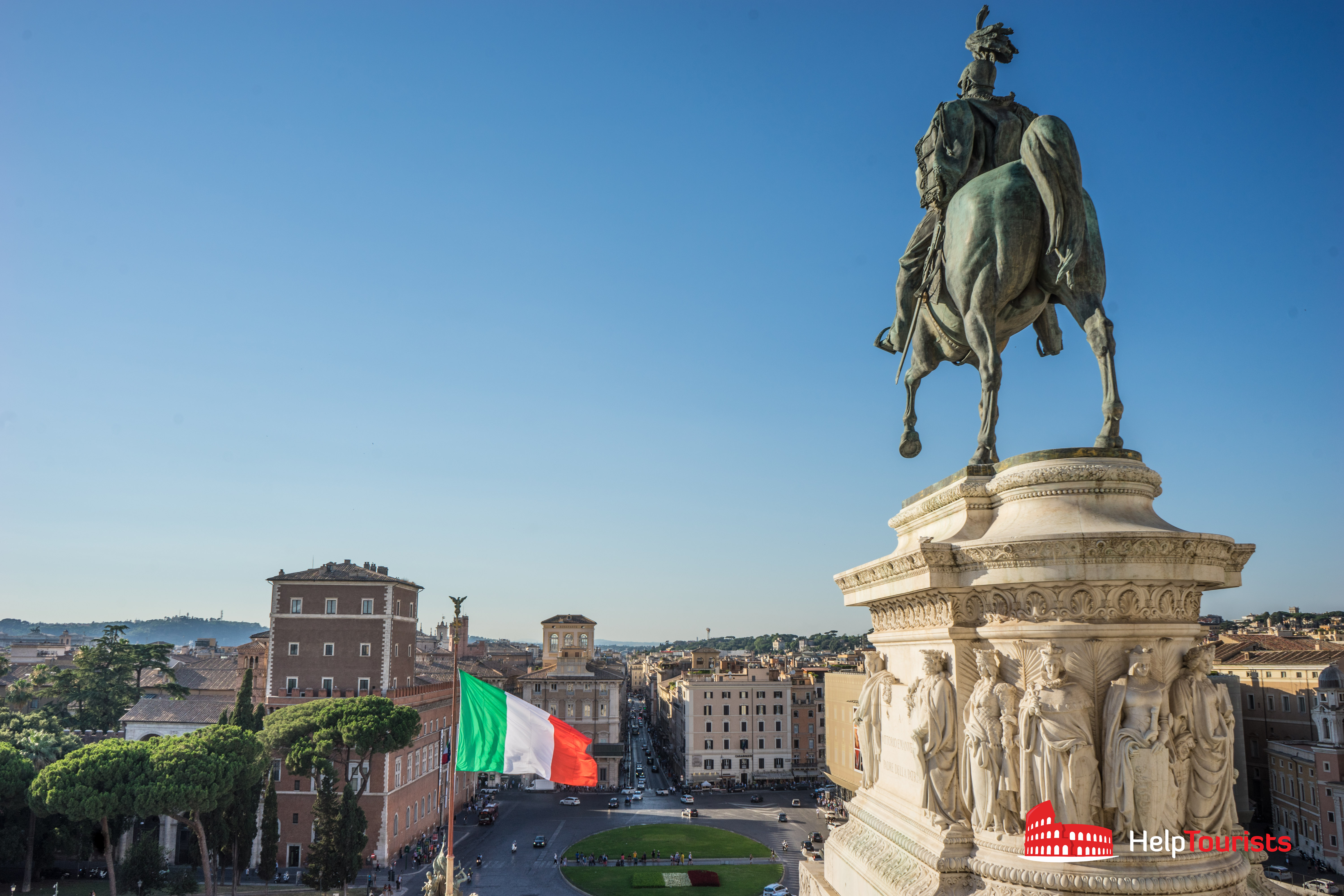
2. Integrated into the national monument: The Museo del Risorgimento
The Museum of the Italian Risorgimento tells the milestones of the Italian Wars of Independence. A whole section is dedicated to some of the most important figures in the history of Italy. Including Garibaldi, Camillo Benso and Giuseppe Mazzini. The entrance is in Via di San Pietro in Carcere, the entrance to the museum is free.
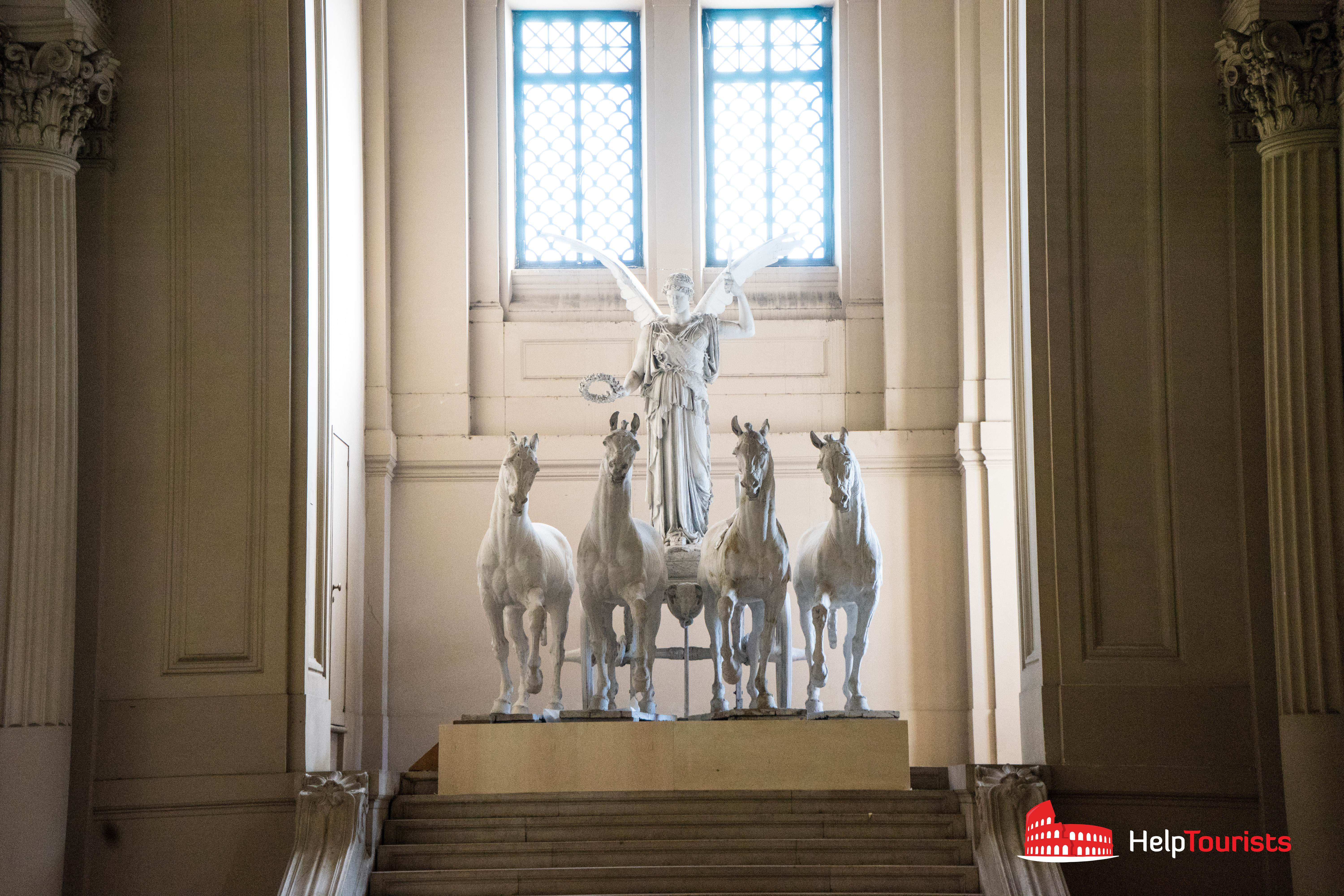
3. The crypt of the Unknown Soldier
Below the imposing equestrian statue you will find the tomb guarded by soldiers in honor of an unknown soldier, which has very strong symbolic value. There are the remains of an unidentifiable Italian soldier. He was buried in the altar of the fatherland on behalf of all unknown war victims to commemorate the sacrifice of millions of Italian soldiers who gave their lives during the First World War.
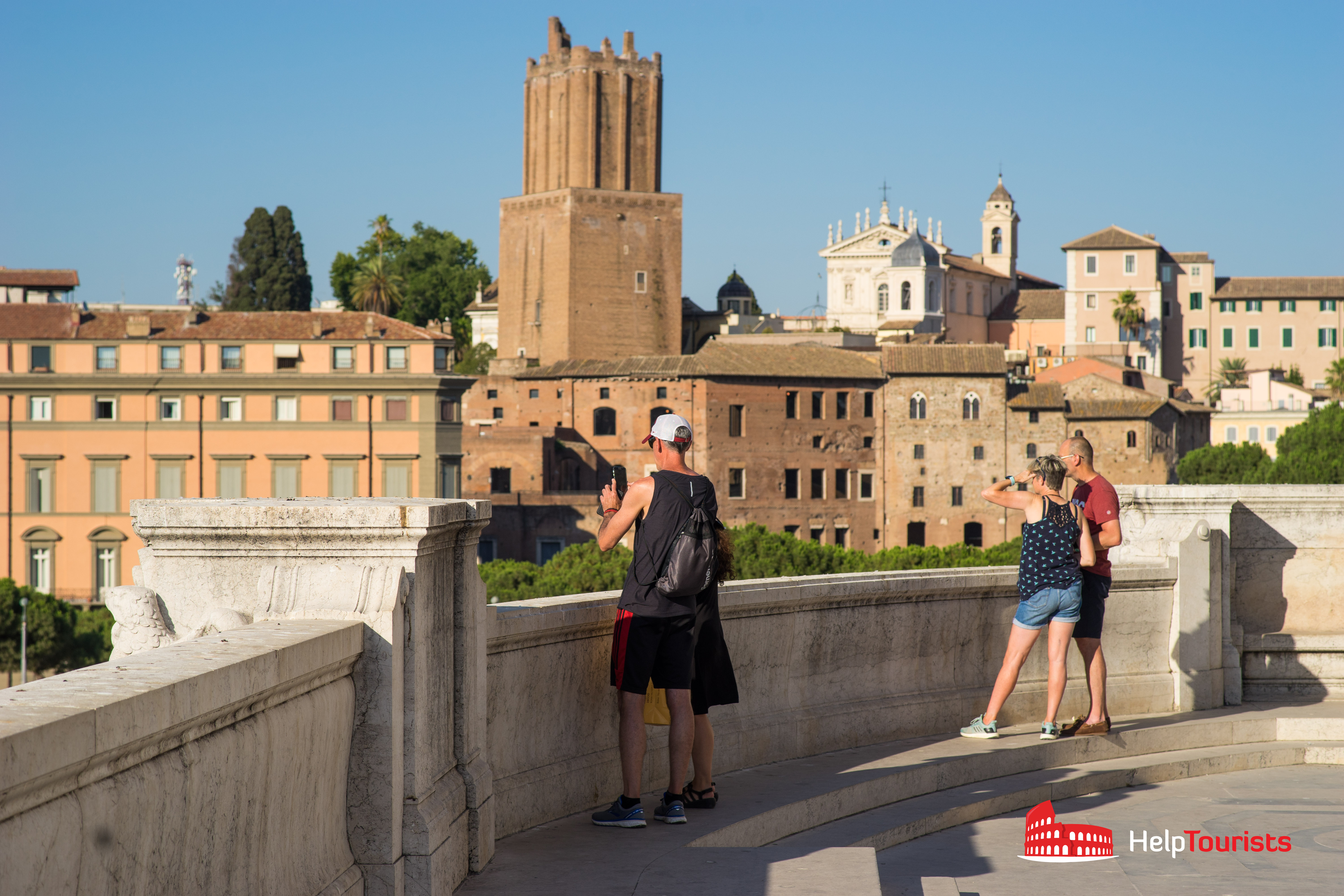
4. Magnificent view from the roof of the national monument
Since March 2007, thanks to two panoramic glass elevators, it has also been possible to get to the roof of the Vittoriano. This is the beautiful upper terrace, which you can reach with an elevator behind the monument. So you can enjoy the same view of the Eternal City that was previously reserved only for the two Quadrigs. As mentioned at the beginning, access to the observation deck on the national monument costs EUR 10.00.
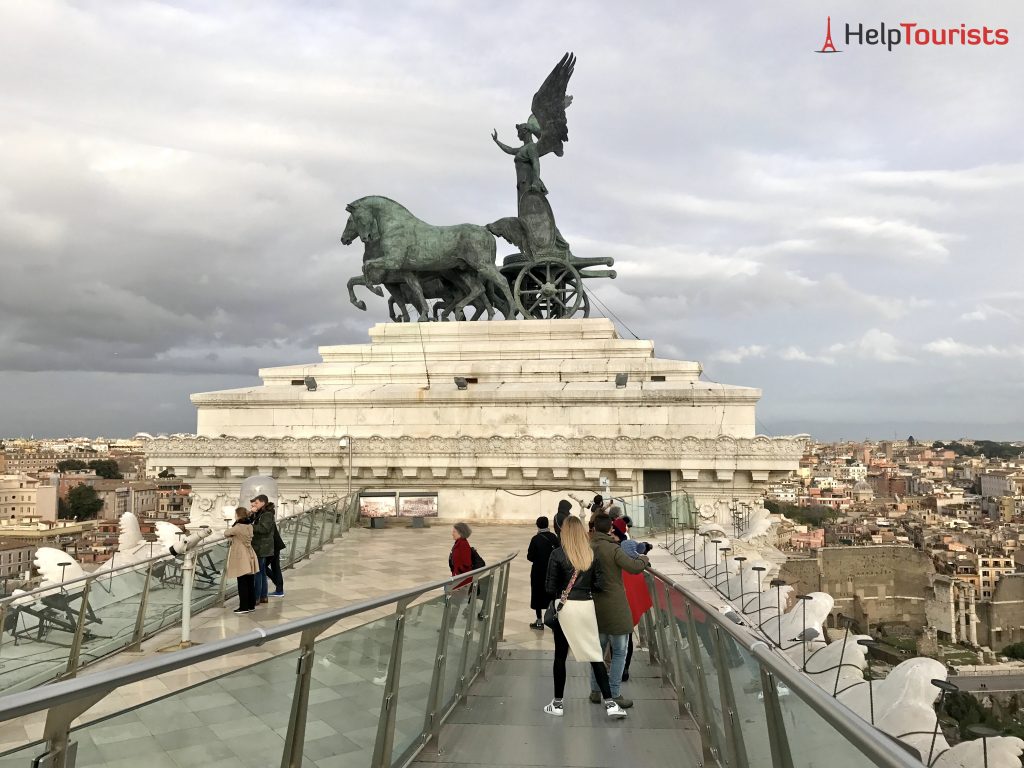
The view of Rome from the roof of Vittoriano – just a stone’s throw from the Colosseum – is truly stunning. Especially now that you’ve learned more about the history and symbolism of this building and understand the central importance that the monument to Vittorio Emanuele in Rome has for the city and all of Italy, right?
The monument to Vittorio Emanuele II in Rome – prices, location and opening times
Admission to the monument for Vittorio Emanuele is free and possible every day from 9:30 a.m. to 7:30 p.m. The monument is closed only on December 25th.
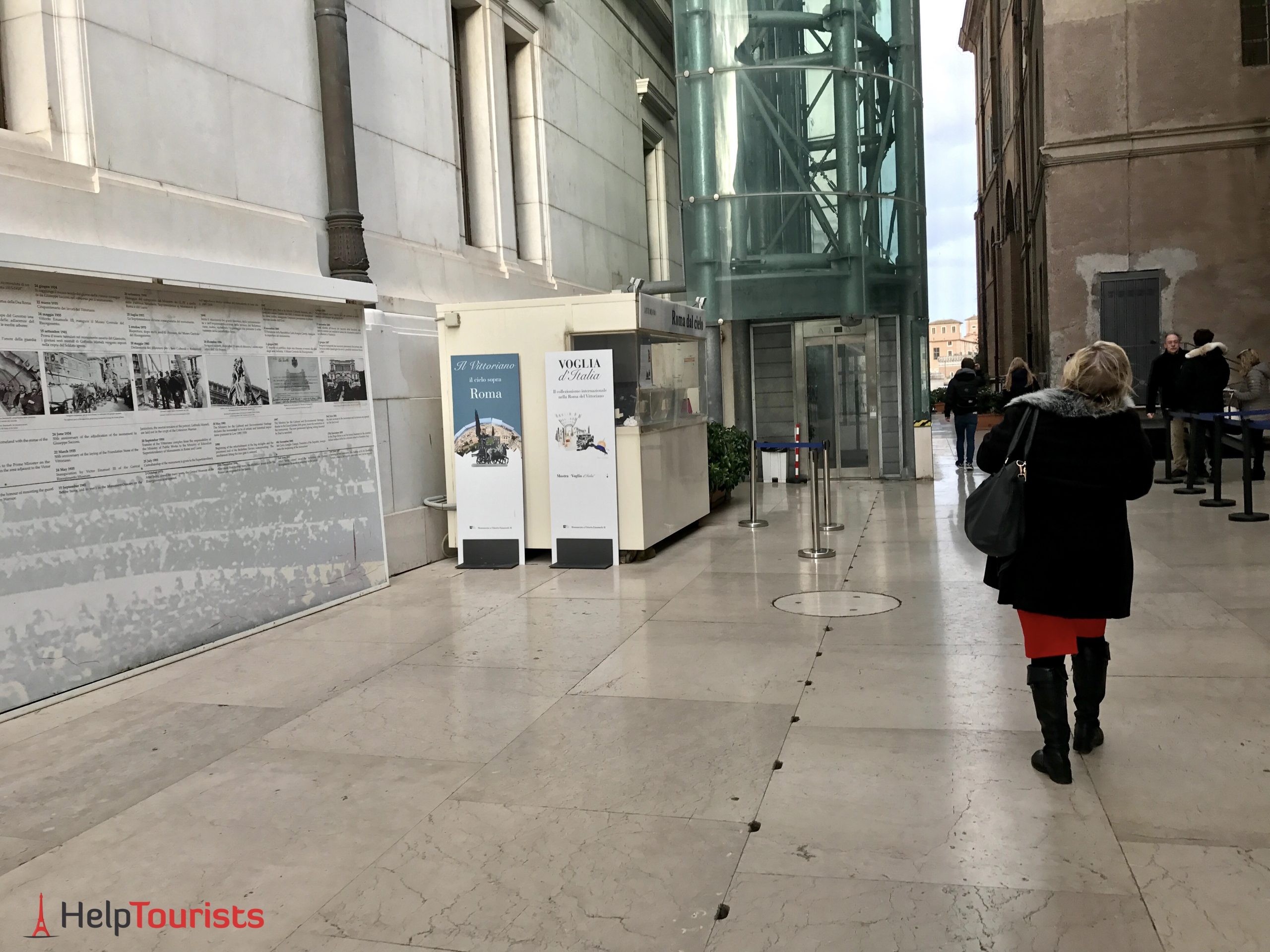
Access to the roof terrace with glass panoramic elevators is possible from Monday to Sunday from 9.30 a.m. to 7.30 p.m. (last entry at 6.45 p.m.). Cost: 10.00 euros for adults, reduced (from 18 to 25 years) 2.00 euros. Children under the age of 18 and the disabled with accompanying persons can ride the panoramic elevator to the viewing platform free of charge.
Thanks to the countless bus routes that stop in the central Piazza Venezia, which dominates the Vittoriano, it is well connected to Rome’s public transport system and very easy to reach. You can also take the Metro B to the Colosseum. From there it’s a short walk down Via dei Fori Imperiali.
Newsletter and social media
Become part of the HelpTourists community on Facebook! In our private group you can exchange ideas with other Rome lovers. Follow us on Instagram and Pinterest and get regular inspiration and insider tips for your next Rome trip!
Pin information about Vittorio Emanuele II Monument on Pinterest
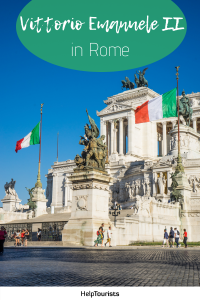
This article contains referral links. There are no additional costs for you, but thanks to these links we get a small commission. This enables us to continue to work diligently on the website and always have the latest information from Rome ready for you. Thank you for your support!








